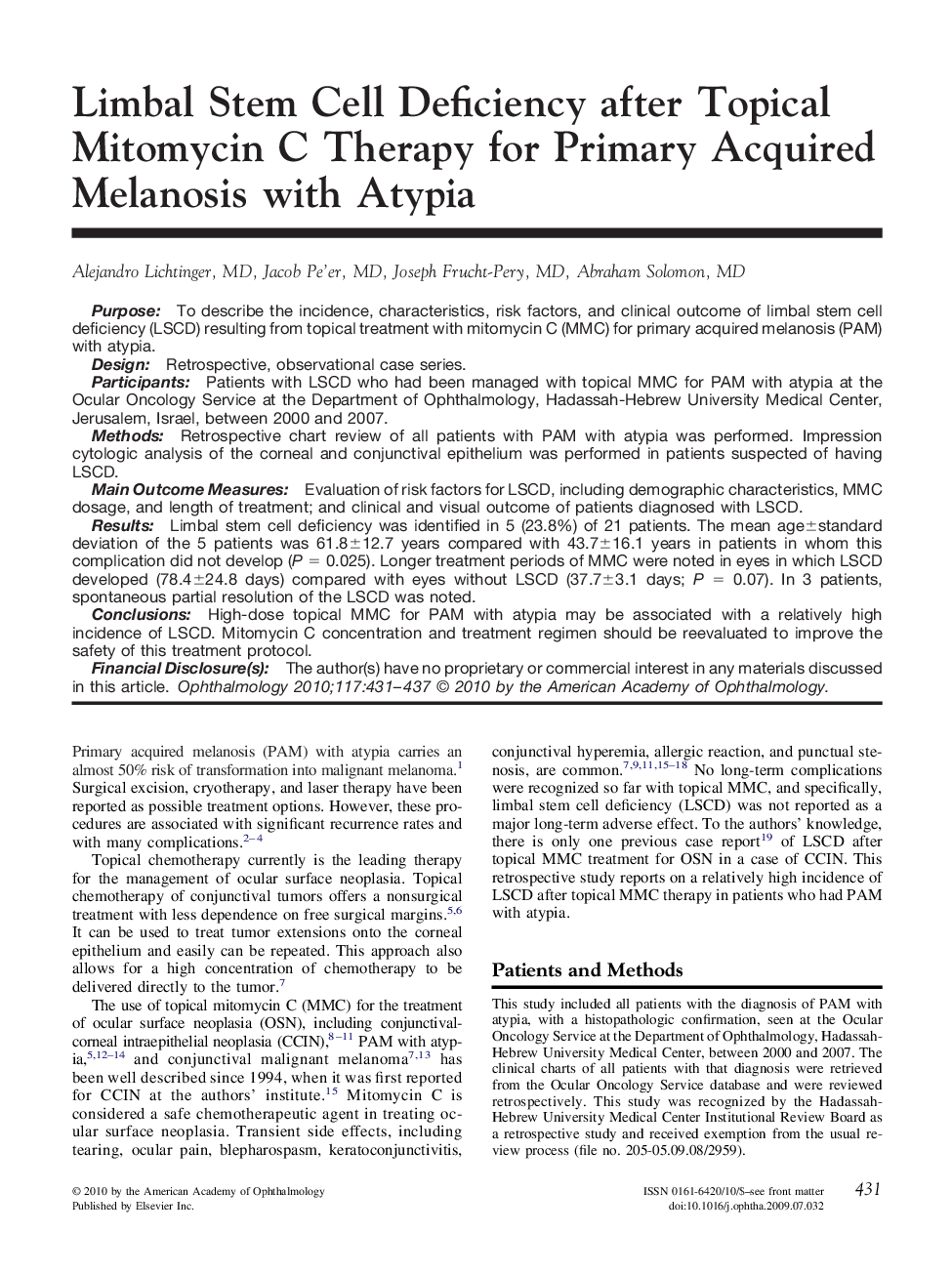| Article ID | Journal | Published Year | Pages | File Type |
|---|---|---|---|---|
| 4028548 | Ophthalmology | 2010 | 7 Pages |
PurposeTo describe the incidence, characteristics, risk factors, and clinical outcome of limbal stem cell deficiency (LSCD) resulting from topical treatment with mitomycin C (MMC) for primary acquired melanosis (PAM) with atypia.DesignRetrospective, observational case series.ParticipantsPatients with LSCD who had been managed with topical MMC for PAM with atypia at the Ocular Oncology Service at the Department of Ophthalmology, Hadassah-Hebrew University Medical Center, Jerusalem, Israel, between 2000 and 2007.MethodsRetrospective chart review of all patients with PAM with atypia was performed. Impression cytologic analysis of the corneal and conjunctival epithelium was performed in patients suspected of having LSCD.Main Outcome MeasuresEvaluation of risk factors for LSCD, including demographic characteristics, MMC dosage, and length of treatment; and clinical and visual outcome of patients diagnosed with LSCD.ResultsLimbal stem cell deficiency was identified in 5 (23.8%) of 21 patients. The mean age±standard deviation of the 5 patients was 61.8±12.7 years compared with 43.7±16.1 years in patients in whom this complication did not develop (P = 0.025). Longer treatment periods of MMC were noted in eyes in which LSCD developed (78.4±24.8 days) compared with eyes without LSCD (37.7±3.1 days; P = 0.07). In 3 patients, spontaneous partial resolution of the LSCD was noted.ConclusionsHigh-dose topical MMC for PAM with atypia may be associated with a relatively high incidence of LSCD. Mitomycin C concentration and treatment regimen should be reevaluated to improve the safety of this treatment protocol.Financial Disclosure(s)The author(s) have no proprietary or commercial interest in any materials discussed in this article.
